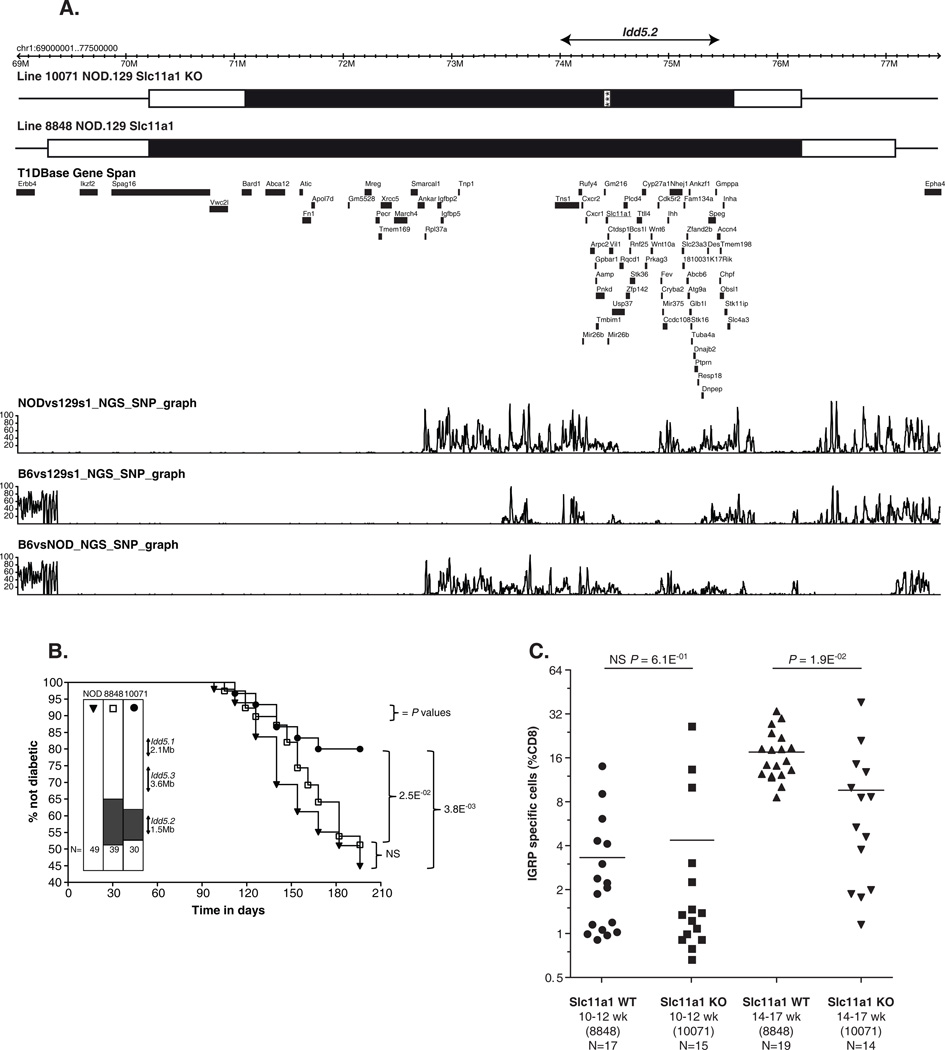Figure 5.
Slc11a1 KO strain is protected from T1D and shows partially restored CD8+ T cell tolerance to endogenous islet antigen IGRP. (A) Genetic intervals of the Slc11a1 WT and Slc11a1 KO strains. Filled black region indicates the 129-dervied DNA and white bars indicate the regions between the ‘in’ and ‘out’ markers. The gene content is displayed in the T1Dbase Gene Span tract (based on GRCm37 genome build), with genes shown in black and Slc11a1 underlined. The SNP density tracks are based on the next generation sequencing (NGS) data and displays SNPs per 10 kb. (B) Diabetes frequencies of the NOD, the Slc11a1 WT and the Slc11a1 KO females were compared. The diabetes frequency studies were conducted at Taconic. (C) Slc11a1 KO alleles contribute to the reduced percentage of self-reactive IGRP specific CD8+ T cells. Results were compiled from 6 independent experiments, each of which analyzed 6–8 female mice per strain, at either 10–12 weeks of age, or 14–17 weeks of age. Female Slc11a1 WT and Slc11a1 KO mice were infected with Vac-KdIGRP. One week later, spleens were harvested, and analyzed by FACS for CD8+ IGRP-tetramer+ cells. Horizontal lines depict means. Pairs of strains were compared using unpaired t-test with Welch’s correction. NS, not significant, p-value ≥0.05.

